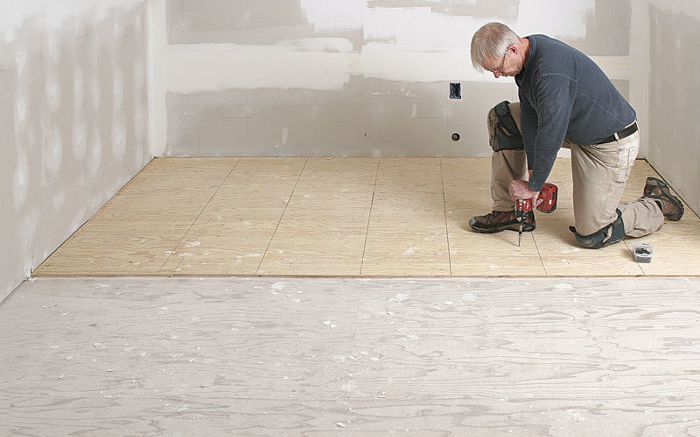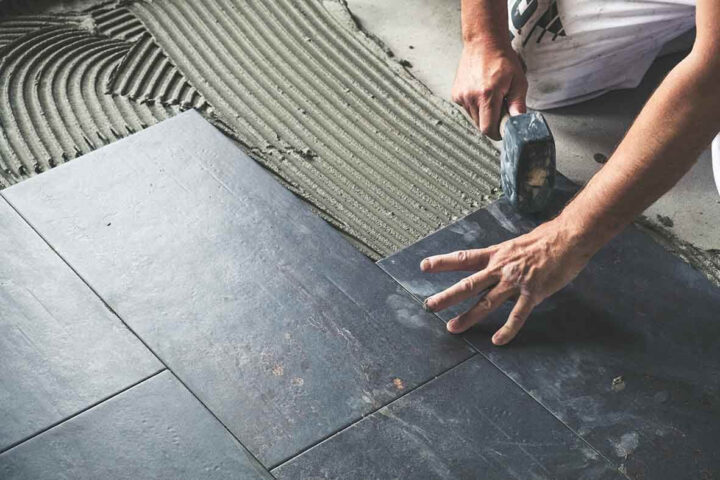Tiles are a popular flooring choice for their durability, ease of maintenance, and aesthetic appeal. However, the installation can be fraught with challenges, one of the most frustrating being the formation of air pockets underneath the tiles. These airbags can compromise the integrity of the flooring, leading to cracking, lifting, and a host of other issues. In this blog post, we’ll delve deep into the root causes under tiles and explore how to prevent them, ensuring your tiling remains beautiful and durable for years to come.
The Importance of Proper Subfloor Preparation

Before laying tiles, it is crucial to prepare the subfloor properly. This is often where the journey to a flawless installation begins.
Assessing Subfloor Conditions
The condition of the subfloor is a pivotal factor in preventing air pockets under them. A subfloor that is uneven, damaged, or improperly cleaned can hinder the adhesive’s ability to perform. It is essential to start with a subfloor that is flat, stable, and free of debris. Checking for dips and bumps and addressing these issues by either sanding down high spots or filling in low spots with a suitable compound can create the ideal base for tiling.
Moisture Content and Its Implications
Another critical aspect of subfloor preparation involves managing moisture levels. Excessive moisture in a subfloor can lead to significant problems, such as the weakening of the adhesive and the warping of the subfloor material, which in turn can cause tiles to dislodge and them to form. Employing moisture barriers or sealants, depending on the type of subfloor and the specific conditions, is crucial for creating a dry and stable base.
Importance of Primer Application

Applying a primer on the subfloor can significantly enhance the effectiveness of the adhesive. Primers help in creating a better bond between the subfloor and the tile adhesive, reducing the chances of forming. This step is significant in porous or highly absorbent subfloors, where the adhesive can dry out too quickly, compromising its bonding capabilities.
Choosing the Right Adhesive and Application Technique
Selecting the appropriate adhesive and applying it correctly are vital steps in avoiding air pockets under tiles. Consulting a professional tile contractor can provide you with expert guidance on the best type of adhesive for your specific tiling project and ensure that it is applied properly to achieve the best results.
Types of Tile Adhesive
The choice of tile adhesive plays a significant role in preventing air pockets. Different types of adhesives are suited to different types and subfloors. For instance, thin-set mortars are ideal for ceramic or porcelain tiles, while mastic might be better suited for wall tiles. Choosing an adhesive that is compatible with both the tile and the subfloor conditions is crucial.
Proper Adhesive Application

The technique used to apply the adhesive can also prevent the formation of air pockets. Using the correct trowel and applying the adhesive in a consistent pattern (commonly recommended is the combing method) ensures an even distribution. This helps in achieving full coverage under them, leaving no room for air pockets to develop. It’s also important to press the tiles firmly into place to expel any trapped air.
The Role of Tiling Techniques
The actual process of laying them is just as important as the preparatory steps. Proper tiling techniques are essential for a seamless finish. When placing them, careful alignment and leveling are key. Using spacers can help maintain even gaps between tiles, which is crucial not only for aesthetic reasons but also for allowing room for expansion, which can otherwise lead to pressure buildup and popping them. Regularly checking the level and making adjustments as necessary during the installation can prevent uneven placement, which is a common cause.
Proper handling and accurate cutting can prevent damage that might compromise their ability to sit flat on the adhesive. Ensure that they are handled gently to avoid any cracks or chips that might affect their installation. Moreover, using the correct tools for cutting them according to their material and thickness is crucial to achieving smooth edges that fit well with adjacent tiles.
Understanding Tile and Subfloor Compatibility

Installation success significantly depends on the compatibility between the material and the subfloor type. The interaction between the tile and the subfloor is critical in avoiding installation problems such as air pockets. For instance, heavy tiles like stone require a sturdier subfloor than lighter materials like vinyl or ceramic. It’s essential to ensure that the subfloor can handle the weight and characteristics. Ignoring this compatibility can lead to structural instability and eventual air pockets or cracks.
Different subfloor materials, such as concrete, plywood, or cement board, require specific preparation techniques and materials to ensure they are compatible with the chosen tiles. For example, concrete might need a membrane to manage moisture, while plywood might require backer board installation to enhance stability and moisture resistance. Understanding and addressing these unique requirements is key to a successful installation.
The Impact of Environmental Conditions on Installation

Environmental factors such as humidity and temperature can greatly influence the tile installation process. The levels of humidity and temperature at the time of installation can affect how well tile adhesives cure and how they settle. High humidity can slow down the drying of adhesives, increasing the risk of air pockets as they may shift before the adhesive sets. Conversely, low humidity and high temperatures can cause the adhesive to dry too quickly, potentially leading to poor adhesion and voids under the tiles.
To mitigate the effects of environmental conditions, control the climate within the installation area as much as possible. Using dehumidifiers in humid conditions or avoiding installation during temperature extremes can help ensure the adhesive cures at an appropriate rate, thus supporting a solid, air-free installation.
Conclusion
Installing tiles is a detailed process that requires attention at every step to prevent issues like air pockets under the tiles. From preparing the subfloor to choosing the right adhesive, and employing proper tiling techniques, each stage plays a pivotal role in achieving a flawless finish. By understanding and addressing the root causes of air pockets, homeowners and professionals alike can ensure that their tile installations are not only aesthetically pleasing but also long-lasting and free of problems.

